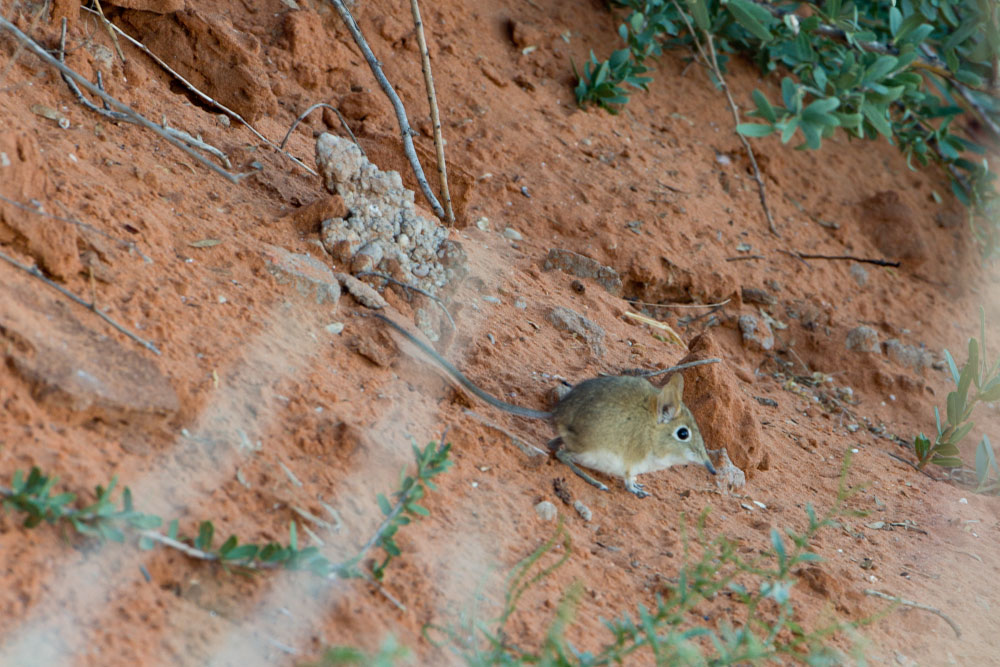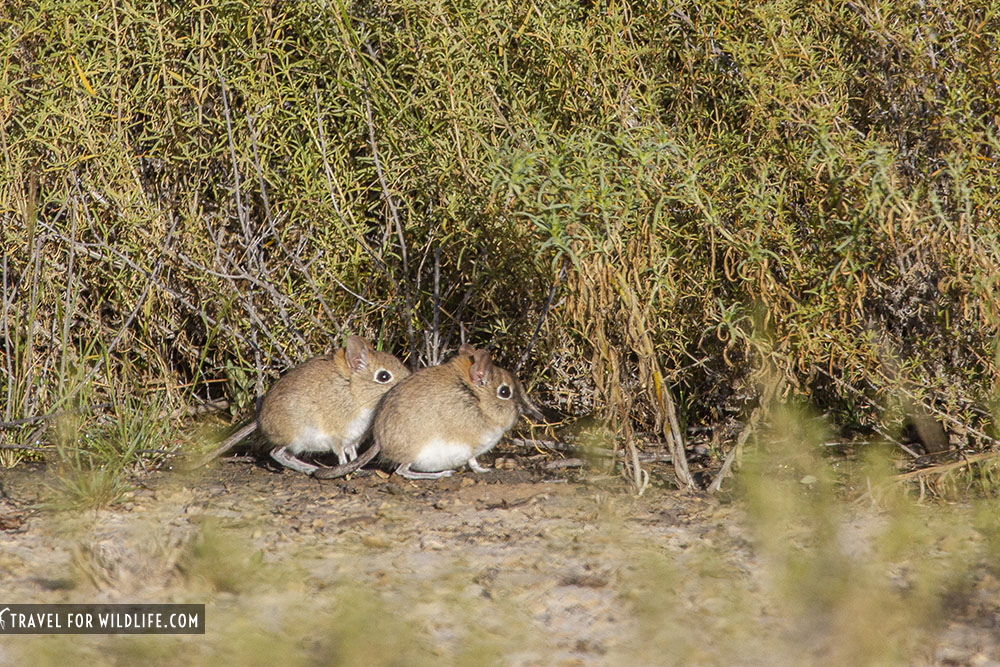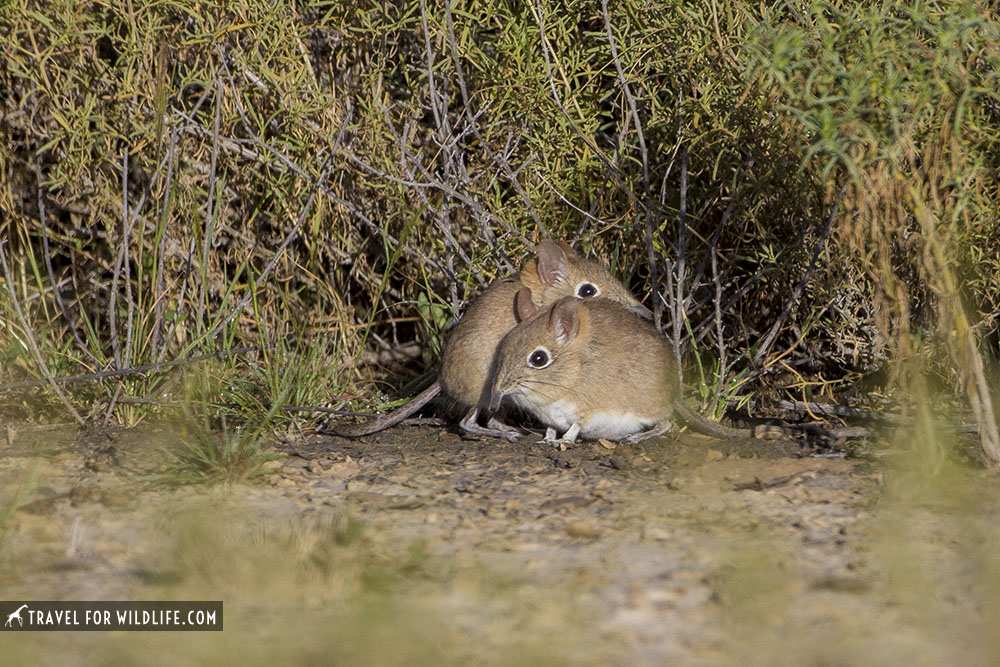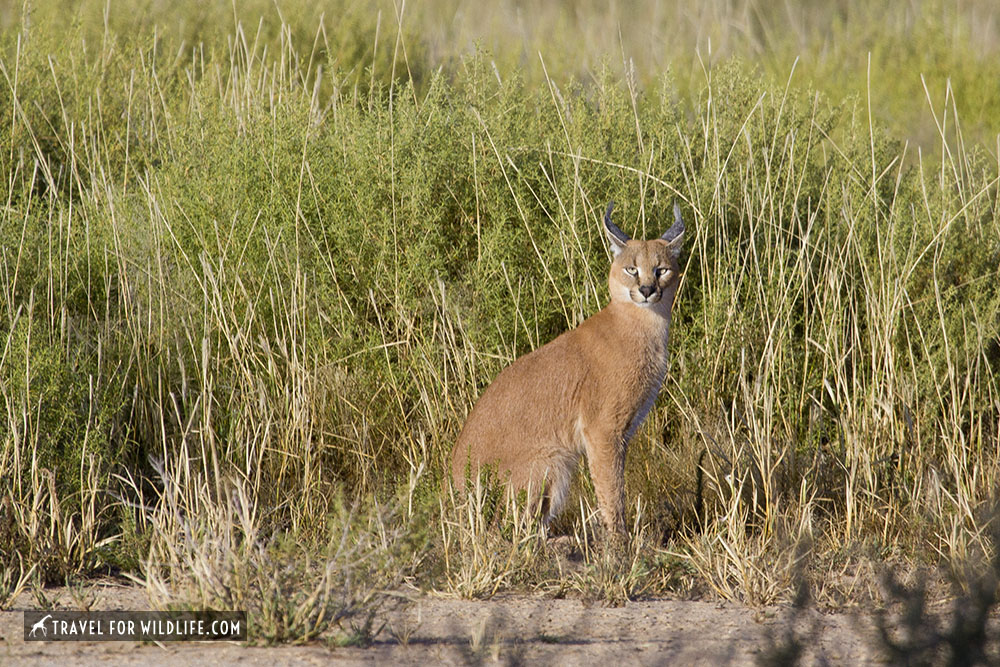At first glance, you might think you were looking at a mouse. But in fact, this tiny insect-eater disguised as a rodent is more closely related to its mighty namesake: the elephants! The Elephant shrew (also known as sengis) is only found in Africa. The 20 known species are found primarily in Southern Africa, Eastern Africa and Western Africa. Let’s take a closer look at the amazing elephant shrews!
For many decades it was thought there were 19 species of elephant shrews, but just last year (2020) the Somali sengi (Elephantulus revoilii) was rediscovered in the Horn of Africa, Somalia, after a 50-year absence of scientific sightings. Thanks to this new research, the understanding of the species continues to increase.

Are Elephant Shrews Elephants, Shrews, Or None of the Above?
Here’s the thing, elephant shrews look like shrews but they are not true shrews. They are were first described in the 1800’s and classified by scientists as shrews because of their physical similarities. Today, scientists prefer to call them sengis, in order to distance them from the misleading name “shrew”.
But, elephants shrews are obviously not elephants either (surprise, surprise). The elephant shrew got its name due to its flexible snout, which resembles the trunk-like nose of an elephant, which is used to find prey including worms, spiders, and insects. Watch the video below to see the elephant shrew’s long snout in action! (we filmed these pair in South Africa)
Elephant shrews can live in different types of habitats. They have been found in deserts (Namibia), dense forests, and rocky outcrops in the Karoo (South Africa).
So What are Sengis?
This is a question that has been baffling scientists for over a hundred years, who’ve variously aligned them with shrews, rabbits, ungulates, and primates.
Recent DNA research reveals that elephant shrews are more closely related to elephants, manatees, and aardvarks than to shrews (although not genetically very similar to either). They currently rest in their own order (Macroscelidea) and family (Macroscelididae). Hence they are scientifically referred to as Macroscelids.

The family Macroscelididae is further divided into 6 genera:
- Elephantulus (Elephant Shrews: Western rock elephant shrew, Cape elephant shrew, Bushveld elephant shrew, Short-snouted elephant shrew, Karoo rock elephant shrew, Eastern rock elephant shrew, Dusky-footed elephant shrew, Dusky elephant shrew)
- Macroscelides (Round-eared Sengi)
- Galegeeska (Somali elephant shrew and Rufous elephant shrew)
- Macroscelids (Namib round-eared sengi, Etendeka round-eared sengi, Round-eared elephant shrew)
- Petrodromus (Four-toed Elephant Shrew)
- Rhynchocyon (Giant Sengis: Golden-rumped elephant shrew, Checkered elephant shrew, Grey-faced sengi, Stuhlmann’s elephant shrew, Black and rufous elephant shrew)
These days, most in the scientific community recognize sengis as a member of the Afrotheria, an ancient offshoot of the African mammal evolutionary tree. These also include hyraxes, sea cows, aardvark, and the tenrecs and golden moles.
Behavior of Sengis
Sengis are solitary creatures but form monogamous pairs. They lead separate lives, sleep in separate burrows, and hunt alone. They only meet for a short period during mating season, so it is quite lucky to see two together like these two who we saw in the Kgalagadi. This tiny mammal has quickly become one of our favorites to spot.
A very interesting thing about these animals is their menstrual cycle. Female elephant shrews have a menstrual cycle very similar to that of humans. It is one of the few non-primates to do so. They bear young a few times a year after a gestation of 45 to 60 days. Young sengis will leave their mothers at about 15 days of age. They’ll find their own territory and will be sexually mature at about 45 days of age.

The giant sengis are strictly diurnal, while the soft-furred species are often crepuscular, with some to little activity during both night and day.
They have well-developed senses of hearing, sight, and smell. They use scent marking to protect their territories.
Some species, like Rhynchocyon, build leaf nests on the forest floor, while most soft-furred species use burrows of other species, or may construct their own. Some species maintain complicated trail systems through leaf-litter, like voles in the snow. Some have learned to shelter in rock crevices.
Under stressful situations, they frequently foot drum the ground. They also may tail slap the ground.
What do Elephant Shrews eat?
All elephant shrews prey on invertebrates like spiders, small insects, and worms found in the leaf litter. They use their long noses to find it. Most species supplement their diet with seeds, small fruits, and green plant matter.
Who Preys on Elephant Shrews?
Like most small mammals, elephant shrews are commonly preyed upon by raptors (birds of prey), snakes, and carnivorous mammals like the caracal pictured below.

Main Threats to Their Survival
The main threat to sengi’s survival is habitat fragmentation.
Highly fragmented forests limit their access to resources and mates. We can see how this is affecting their populations by looking at the black and rufous sengi. In the past ten years, their population has declined by about 20 to 30 percent. This has been correlated to habitat loss dues to increased fires, resulting in habitat loss.
Are Elephant Shrews Endangered?
Most of the 20 known species of elephant shrews are considered “Least concern”. The Golden-rumped sengi (Rhynchocyon chrysopygus) is considered “Endangered”. The Gray-faced sengi (Rhynchocyon udzungwensis) is considered “Vulnerable”
Elephant Shrews are one of the Little Five
Most people have heard about the Big Five, a term that was given to the most dangerous African animals during colonialist times. The animals in the Big Five group are leopard, rhino, lion, buffalo, and elephant. In more recent decades, safari marketing managers have used the ‘Big Five’ as a way to lure tourists to Sub-Saharan Africa on African safaris.
The Little Five (also known as Small Five) takes this a step further. The Little Five is a term given to five small animals in Africa that share part of their name with the Big Five and were named due to a shared physical resemblance or behavior. The Little Five are leopard tortoise, rhino beetle, ant lion, buffalo weaver, and elephant shrew!
While we have seen all of the Little Five, seeing the elephant shrew was the most memorable one!

Cristina Garcia
Zoologist and wildlife photographer. She has worked in the field with jackals, wolves, cheetahs, & leopards. She serves on the Board of Directors of SEE Turtles, a non-profit sea turtle conservation organization.
Read her posts at Travel For Wildlife and see more of her work at Truly Wild, & Our Wild Yard.

Steven Miller
Sunday 21st of March 2021
I can't seem to find a website telling me the difference between a Shrew and the Elephant Shrew. I can get one or the other, many loosely mention the other, but I don't want to have to conduct my own research and publish a report. Please give us a definitive Compare and Contrast synopsis.
Mthabisi ndlovu
Tuesday 7th of February 2023
Im looking for the same thing rh ...not finding it